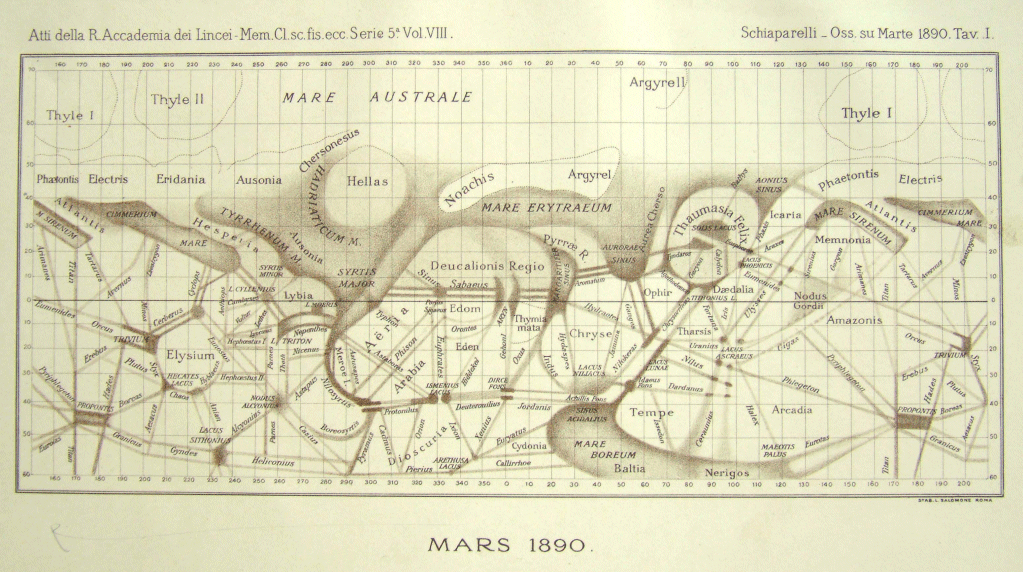
In 1877 Schiaparelli published his first map of the planet Mars. This new and more precise map contained a web of fine straight lines, that would become even more complex in future maps.
In his papers Schiaparelli called these “canali”, based on similar features that characterize Earth’s geography. He certainly did not expect to start a controversy that would last for decades!
Immediately after the publication of the map and the presentation of his discoveries to the scientific community, astronomers around the world started speculating on the nature of these “canals” and, although Schiaparelli himself was a bit reluctant to consider a possible non-natural origin, many of his colleagues were less rigorous.
One of the causes of this “Mars fever” was probably in the english translation of the word “canali, which, in italian, does not distinguish man-made canals (Suez) from natural channels (English). This term then was interpreted as a suggestion that canals had been constructed by a technically advanced civilization living on Mars. This actually was not what Schiaparelli ment.
The observations during the 1881 opposition of the planet help reinforcing the idea of an artificial origin of these structures, when Schiaparelli reported a new phenomenon, the “gemination” or doubling of the canals, with variations in color and width.
Astronomers took two different sides: some, like Hall and Maunder, denied the presence of canals on Mars’s surface; others, like Pickering and Percival Lowell, were firmly convinced of the existence of the canals. Lowell was so taken by this idea that he wrote several books on canals and the civilization responsible for them.
The real origin of the Mars canals was revealed by another italian astronomer, Vincenzo Cerulli, founder of the Astronomical Observatory in Teramo (in the Abruzzo region). He gave a convincing explanation, still generally accepted, after he himself observed Mars through a larger and more powerful telescope. He suggested that the lines were a sort of optical illusion, created by the human brain that “needs” to interpret even vague and indistinct images with familiar shapes. Therefore, poor quality images, such as those that low quality telescopes would provide, would be interpreted as structured shapes, for example connecting individual roughly aligned “dots” into straight lines.
